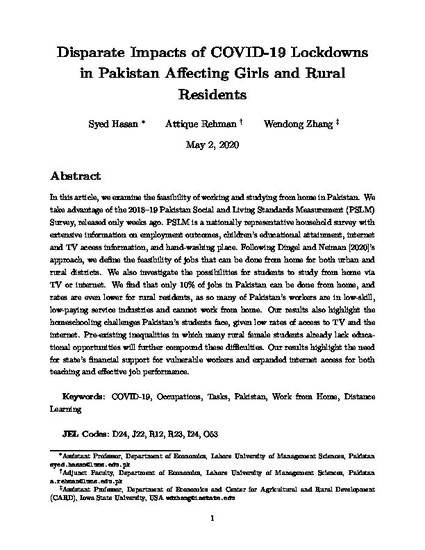
In this article, we examine the feasibility of working and studying from home in Pakistan. We take advantage of the recently released 2018–19 Pakistan Social and Living Standards Measurement (PSLM) Survey. PSLM is a nationally representative household survey with extensive information on employment outcomes, children’s educational attainment, as well as internet and computer access and prior usage information. Modifying Dingel and Neiman [2020]’s approach, we define the feasibility of jobs that can be done from home based on the percentage of tasks that can be switched online and accounting for internet accessibility. We also investigate the possibilities for students to study from home via TV or internet. We find that only 10% of jobs in Pakistan can be done from home; however, megacities have much higher rates and rural areas have lower rates. In addition, many of Pakistan’s male workers are in low-skill, low-paying service industries and cannot work from home, while occupations with a higher female employment share have a relatively higher work-from-home share despite lower percentage of prior internet use. Our results also highlight the homeschooling challenges Pakistan’s students face given the low rates of television and internet access. The government’s outreach effort through the new Teleschool TV channel could help alleviate pre-existing gender inequalities in access to education.
Original Release Date: May 2, 2020
Revision: August 5, 2020
Available at: http://works.bepress.com/wendong_zhang/97/
